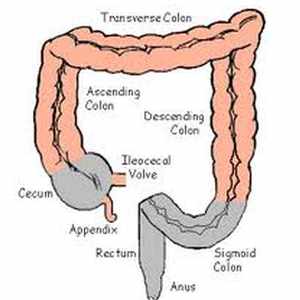

MedFriendly®


Ileocecal Valve Disorder
As the name implies, ileocecal valve disorder is a
structure or man-made device in a passageway, tube,
vessel, or hollow organ that allows fluid or partly fluid
contents to travel in one direction, but closes to prevent
the flow of those contents in the opposite direction. The
ileocecal valve connects the small intestine with the
large intestine. The intestine is a tube shaped structure
that is part of the digestive tract. The intestine is
divided into two main sections: the small intestine and
the large intestine. The small intestine takes in all of the
nutrients (healthy substances) that the body needs.
FEATURED BOOK: Creating a Healthy Balance in the Ileocecal Valve
The large intestine absorbs moisture from the matter that is left, and excretes the waste
(i.e., feces) from the anus. Excrete means to release from the body as waste.
Food normally travels from the small intestine to large intestine. The ileocecal valve
prevents food from reentering the small intestine once it gets to the large intestine. In
other words, it prevents the food from traveling backwards, from the large intestine to the
small intestine. The ileocecal valve may become irritated in health conscious people who
eat large amounts of foods that are high in dietary fiber. Dietary fiber is a term for
chemical substances in the cells of plants that cannot be digested by the human body. As
a result of the irritation to the ileocecal valve, it may not be able to function as effectively.
"Where Medical Information is Easy to Understand"™
WHAT ARE SIGNS AND SYMPTOMS OF ILEOCECAL VALVE
DISORDER?
Signs and symptoms of ileocecal valve disorder are pain in the
lower right part of the belly, feeling full after eating small amounts of
food, and feeling bloated.
Constipation (difficulty pooping), gas, and diarrhea (loose, watery
feces) are also symptoms of ileocecal valve disorder. Feces is
another name for poop. The previously mentioned symptoms can
get worse after eating foods high in dietary fiber.
HOW IS ILEOCECAL VALVE DISORDER TREATED?
Ileocecal valve disorder is usually treated by taking steps to decrease the irritation to the ileocecal valve.
This can be done by decreasing the intake of foods that are high in dietary fiber. Other steps that can be
taken include avoiding foods that have lots of spices, and avoiding scratchy foods such as grains and
wheat bran. Avoiding foods that cause constipation, such as bananas and cheese can also be helpful.
People should also avoid foods they are sensitive to.
WHAT IS THE ORIGIN OF THE TERM "ILEOCECAL VALVE DISORDER"?
Ileocecal valve disorder comes from the Latin word "ileum" meaning "intestine," the Latin word "caecus"
meaning "blind," the Latin word "valvarum" meaning "folding door," the Latin word "dis" meaning "apart,"
and the Latin word "ordo" meaning "rank." Put the words together and you have "blind intestine folding
door apart rank."















